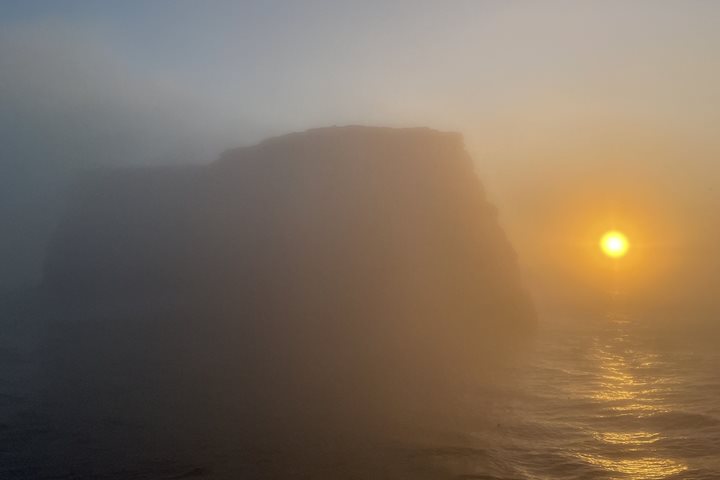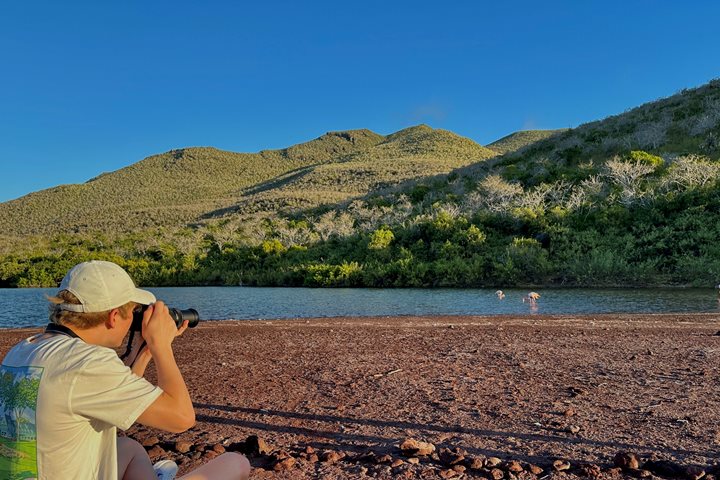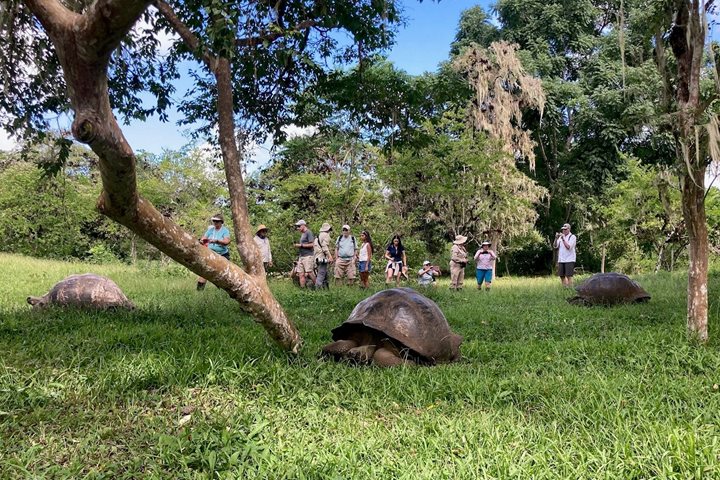Española Island, on the southeastern end of the archipelago is an old shield volcano that is slowly but surely losing the battle against the elements after drifting over 200 kilometers from its birthplace. Moving above of the Nazca Plate, it has drifted so far from its birthplace that it is effectively losing the life force that fuels most volcanic activity in this group of islands. Despite being presently only a fraction of its original size, it is still home to vast numbers of seabirds, as well as an endemic species of mockingbird and lava lizard. During the morning hours, we explored the northeastern end of the island at Gardner Bay and nearby Gardner Islet as well as the western end at Suarez Point during the afternoon.
- Daily Expedition Reports
- 09 Sep 2019
Española/Hood Island, 9/9/2019, National Geographic Islander
- Aboard the National Geographic Islander
- Galápagos
Benjamin Ayala, Naturalist
Ben is a German-Ecuadorian naturalist guide who grew up on San Cristobal, the eastern-most island of the Galápagos Archipelago, home to the political capital of the province.
Read MoreShare Report
Galápagos Escape: An 8-Day Voyage
VIEW ITINERARYRelated Reports
5/20/2025
Read
National Geographic Islander II
North Seymour and Rabida Islands
Today was an amazing day from sunrise to sunset. We explored the beautiful North Seymour Island in the first part of the day. So many birds! We even saw the fascinating courtship dance of the blue-footed boobies. What a treat! In the afternoon, we went for our first snorkeling experience in the Galapagos, swimming with sea lions and so many fish. To end our day, we had the option to go for a photo-oriented or natural history walk along the astonishing red sand beach of Rabida Island. I oversaw the photo-oriented walk, and we had so much fun. Our guests put into practice what they learned during the photo presentation we had yesterday, and the result was amazing. We cannot wait for another day full of adventures in the Galapagos Archipelago.
5/19/2025
Read
National Geographic Islander II
Santa Cruz Island
Our first full day had plenty of wonderful surprises as we disembarked in Puerto Ayora, the main town on Santa Cruz Island. As soon as we arrived, we took a bus all the way to the highlands of Santa Cruz until we reached El Trapiche Farm, a unique site where the guests of National Geographic Islander II learned about the production of organic coffee, cocoa, and sugarcane liquor. Afterwards, we visited the Twin Craters. This amazing site is comprised of two incredible pit craters formed by the collapse of volcanic magma chambers. The area is surrounded by a forest of the unique Scalesia pedunculata, a tree that is endemic to the area. The spectacular visit to El Manzanillo Ranch gave us the opportunity to walk among the incredible Galapagos giant tortoises, often found in the early afternoon having lunch and resting. Being surrounded by these gentle giants was the best way of ending our visit.







